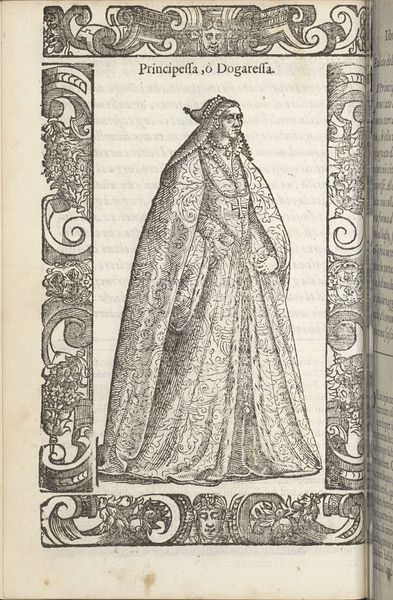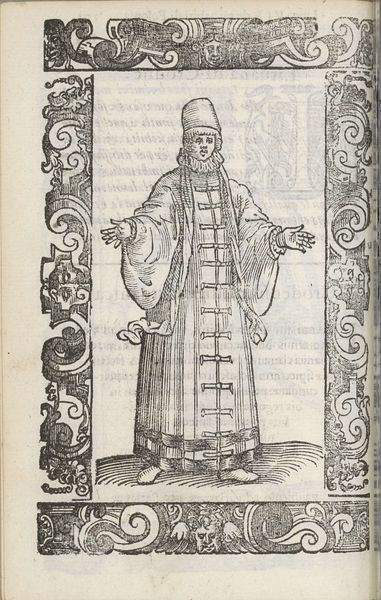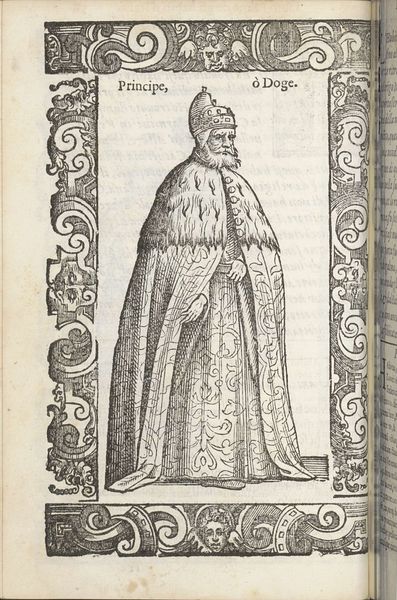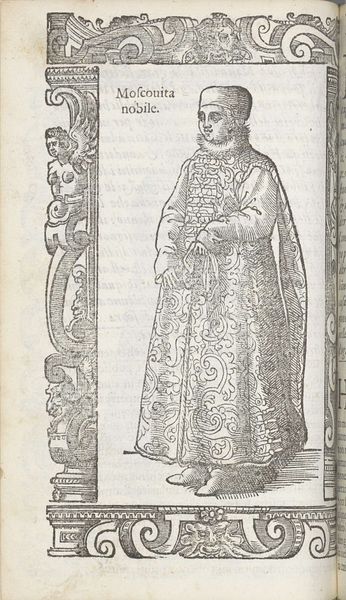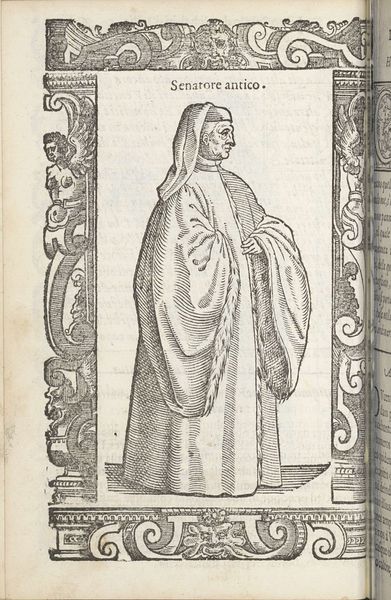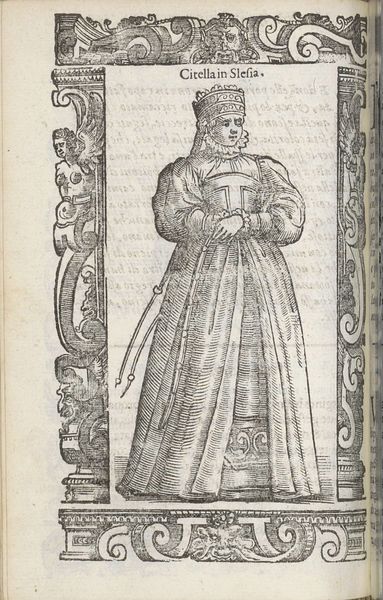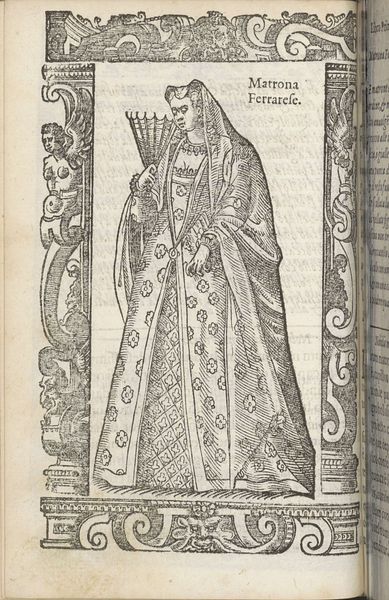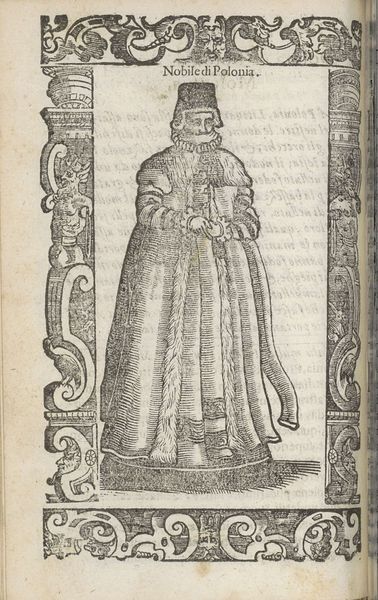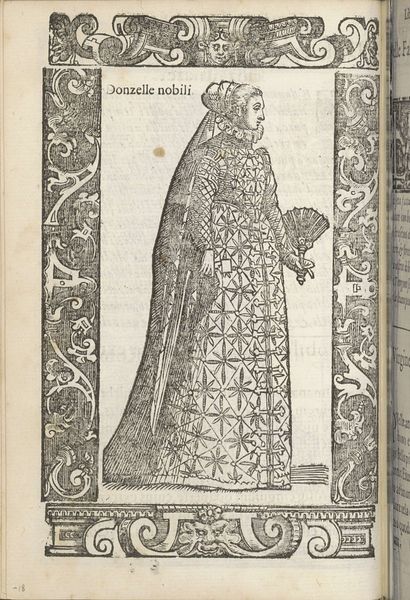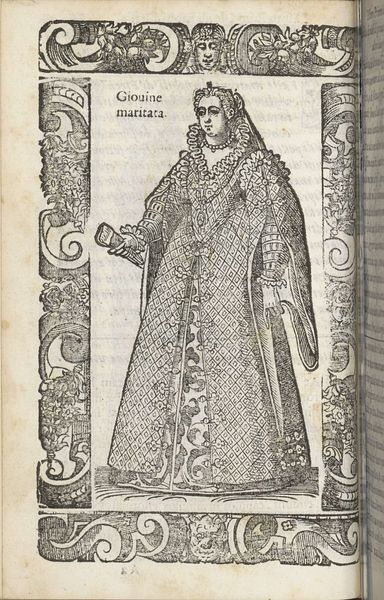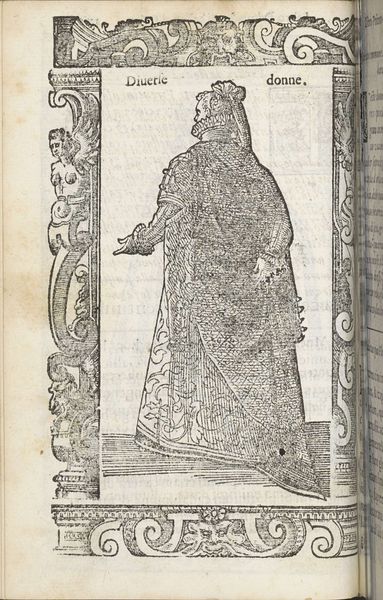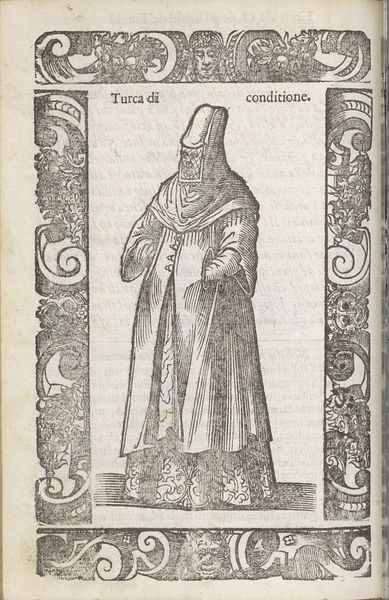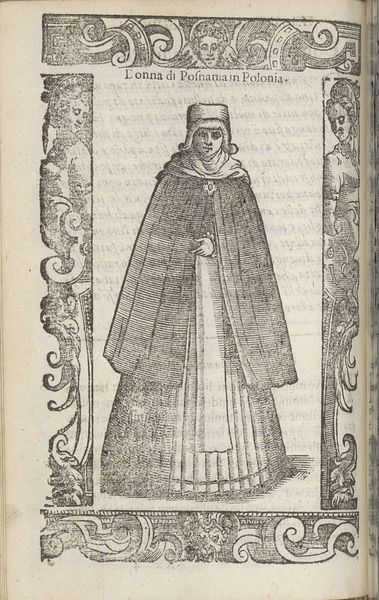
print, engraving
#
portrait
#
pen drawing
# print
#
old engraving style
#
figuration
#
11_renaissance
#
line
#
engraving
Dimensions: height 167 mm, width 125 mm
Copyright: Rijks Museum: Open Domain
Curator: This engraving, titled "Donna del serraglio", by Christoph Krieger, was created around 1598. It offers an intriguing depiction of a woman, likely of noble standing given her opulent attire. Editor: My first impression is one of contained grandeur. The monochromatic lines are exquisitely detailed, yet the subject's rigid pose and the architectural frame impart a sense of constraint, even somberness. Curator: The term "serraglio," or seraglio, historically alludes to the enclosed living quarters used by royal women. This image can be seen as commenting on the role, identity, and even potential imprisonment of women within specific social strata of the era. Consider the highly patterned robe—a cage of rich design. Editor: I am interested in the pattern itself. Observe the symmetrical floral motifs, the repetition within each diamond. The density of detail almost overwhelms the figure, yet also emphasizes the sheer artistry of the engraver. The stark contrast of black ink against the paper accentuates the flatness. Curator: Indeed, notice how the border design incorporates additional female figures, further reinforcing themes of confinement and observation. The engraving is less about a particular individual and more a symbolic representation of women's status within a controlled environment. Editor: Agreed. The stylized faces framing the main figure lack individual character; they appear as aesthetic elements functioning structurally in relation to the architecture. It seems the composition supersedes representational likenesses. Curator: Yet, within those archetypes reside whispers of cultural memory. Even with their idealized faces, those female figures flanking the frame retain historical weight. As an artwork, the print becomes a mirror reflecting power structures that governed gender and rank. Editor: The line work is extraordinarily precise; I'd say almost clinically so. Its rigidity is a sign that this image is not primarily concerned with beauty but with an intellectual representation that’s playing to contemporary taste. The focus seems conceptual over representational. Curator: To me, it feels both. Krieger has preserved her representation in an era vastly different from our own. It is fascinating how symbolic understanding of figures in art shifts over centuries, while these engraved lines keep reminding us where we come from. Editor: Ultimately, it reveals how art itself participates in structuring power dynamics by means of visual design. The medium speaks, whether subtly or starkly.
Comments
No comments
Be the first to comment and join the conversation on the ultimate creative platform.
